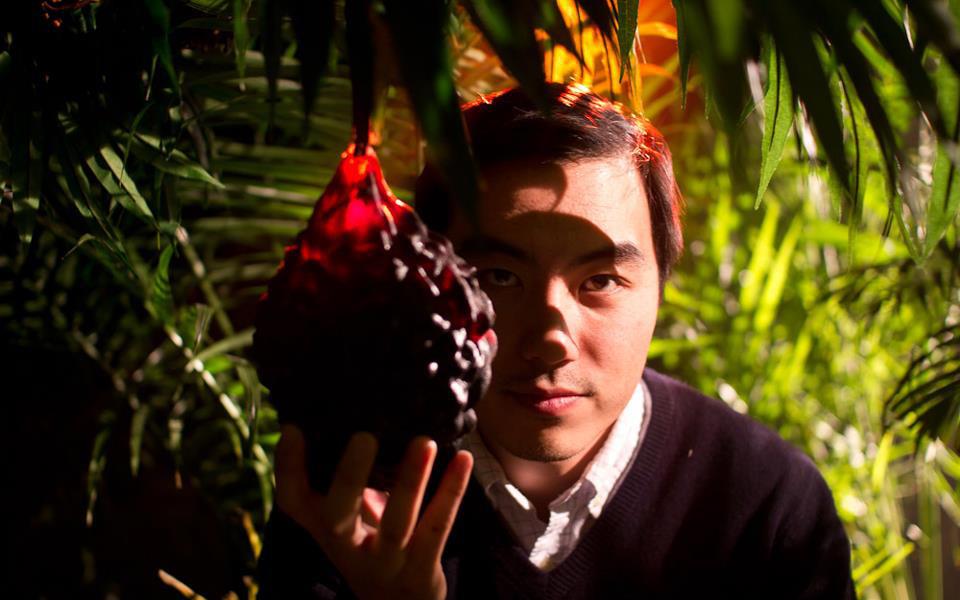It took thousands of years for spices to find their way into Kenyan food. But it took just one enterprising Seattle cook to yank them back out.
Kenya is situated in Africa’s eastern maize belt, far removed from the western region whose cooks helped midwife crawfish, okra, collards, and black-eyed peas into American cuisines usually lumped together under the heading “Southern.” While eaters on the opposite side of the continent had their pick of rice, yams and plantains, East Africans developed a staunch porridge culture around starchy grains such as millet, sorghum, and—after its importation from the New World in the 1500s—maize. The average modern Kenyan eats more than 200 pounds of corn a year, much of it in the form of ugali, a stiff, unyielding mash superficially similar to grits.
Aid workers hate ugali because it has no nutritional value, and, although it’s the most Kenyan of foods, visitors fuss about it because it tastes like chalk. (“Kenya has no great national dishes,” sniffs the opening line of The Rough Guide to Kenya‘s chapter on eating and drinking.) But if corn is relatively new to the territory now known as Kenya, ugali’s flavorlessness has ancient antecedents. In Stirring the Pot: A History of African Cuisine, James C. McCann describes the region as “spice-challenged,” writing “Unlike the dishes of West Africa or Ethiopia, the maize belt’s relishes contain almost no spices, though they occasionally contain chopped fresh chiles and a few wild herbs. Salt was certainly rare and used sparingly, even as late as the 1930s.”
For eaters accustomed to a kaleidoscopic selection of seasonings, feasting on Eastern African food traditionally had all the appeal of gnawing on one’s own fingers. But respite came in the form of trade, with an Indian Ocean network established by the ninth century. Safety-seeking mariners, who relied on sextants instead of Zagats, huddled in the natural harbors along the African coast. Their ships, loaded with curry, cinnamon, cloves, ginger, and sugar cane, became floating pantries for port cities. Although most inlanders didn’t tamper with their ugalis and unspiced mashed peas, coastal cooks incorporated peppers into their repertoires, pioneering the dishes that typically bear the Kenyan name abroad.
When Kenyan native Jane Kagira moved to Seattle in 1999, she began preparing dishes that referenced the well-traveled trading corridor between Mombasa and Mumbai. She fried thick-skinned samosas, rolled out sand-colored chapatis, simmered greens, and steamed rice with curry powder. And she brightened nearly every dish, from pan-fried goat to chicken stew, with a variety of chile peppers.
Kagira’s friends and relatives loved her unabashed use of spice. But when she applied for a catering license in 2010 so she could work a wedding, Kagira discovered the typical Seattle palate was positively East African. “I can’t make food hot here,” grumbles Kagira, who last summer opened Safari Kenyan Cuisine in Columbia City.
If Kagira had her druthers, she’d “just put spice right in the food.” But since the majority of her customers can’t abide it, she’s purged her recipes of spices, using all the deleted ingredients to create a hot sauce that’s easily the most remarkable concoction emerging from her tiny restaurant kitchen.
Nations to the west of Kenya frequently douse their food in piri-piri sauces, made from crushed chiles, citrus, and garlic, and harissa is a common condiment further north. In Kenya, though, hot sauce is a rarity. Kagira’s sauce is entirely her own invention. “I describe it as a unique taste,” she says. “It’s special because it’s original. In many hot sauces, all you taste is vinegar. I don’t have vinegar in mine.”
Without vinegar, Kagira’s sauce—called Tsavo Spice Sauce—has more heft than most squirt-on flavor-boosters. The slightly grainy, pumpkin-hued sauce is as viscous as Grade D maple syrup and pebbled with stray chile pepper seeds. It tastes of cardamom and grapefruit peels, and has enough heat to make the line between revelation and regret very thin. Kagira says she uses five different peppers, but won’t reveal which ones. “It’s all local ingredients,” she says. “Only maybe one or two ingredients from Kenya.”
For Safari Kenyan diners lulled into a good-timing mood by the rhythmic Kenyan music on Kagira’s sound system, guessing the sauce’s ingredients is the parlor game of choice. Habaneros? Oranges? No matter what’s ventured, Kagira always says no. She has reason to be coy: This month, Kagira met with a designer to develop a logo for her sauce. “The plan is to get a young man or female to stand at the farmers market,” she says; if that goes well, she’ll next approach Costco, and then perhaps contemplate national distribution.
“Somebody called me from Houston, Texas,” Kagira says. “He was here when he was visiting. He called to see if I can supply him. He wants it for his grocery store, because he liked it so much.”
Before she can start bottling her sauce, Kagira says she has to figure out what kind of container to use for it. “Because it’s not a liquid, [and] it’s not a solid,” she explains. At the restaurant, the sauce is stored in a plastic ketchup squeeze bottle. The catch: There’s only one bottle of sauce, and seven times as many tables, so guests have to share.
“When I very first started, I started with Vietnamese sauce,” Kagira says. A few guests still request it, but Kagira can’t afford to buy as many squeeze bottles as she’d need to keep Sriracha and her housemade sauce on every table, so she fills the single bottle according to her table’s preference. On occasions when multiple tables have differing hot-sauce proclivities, she uses disposable cups.
For her restaurant guests, Kagira packs her sauce in emptied 10-gram jars. “I use a lot of ginger in my tea, so after I finish, I put my hot sauce in them,” she says. A jar sells for $20. “It’s good in everything that does not have sugar,” Kagira says. “It is even good with samosas.”
Having smeared the sauce on nearly everything Kagira serves in her homey restaurant, I can confirm it adds a welcome punch to tilapia and greens. But it’s especially good on ugali.








